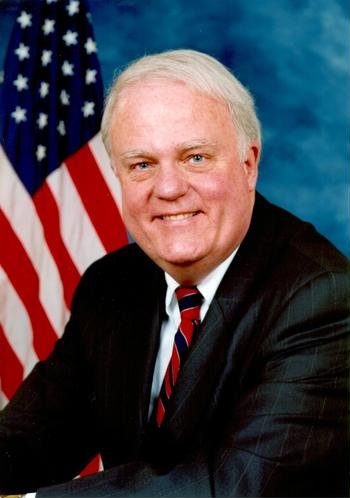Congressman Sensenbrenner Statement at Markup of the Adam Walsh Reauthorization Act
"I urge my colleagues to support this bill..."
WASHINGTON, D.C. – Today, Congressman Jim Sensenbrenner delivered the following remarks during the House Judiciary Committee’s markup of H.R. 1188, the Adam Walsh Reauthorization Act of 2017, legislation reintroduced by Congressman Sensenbrenner earlier this year.
Watch the statement here.
Read the full transcript below:
The Adam Walsh Child Protection and Safety Act, enacted in 2006, is landmark legislation intended to keep our communities, and most importantly our children, safe from sex offenders and other dangerous predators.
This bipartisan bill strengthened sex offender registry requirements and enforcement, extended federal registry requirements to Indian tribes, and authorized funding for several programs intended to address and deter child exploitation.
The centerpiece of the Adam Walsh Act is the national Sex Offender Registration and Notification Act, or SORNA [SORE-NA]. SORNA’s goal is to create a seamless national sex offender registry to assist law enforcement’s efforts to detect and track offenders. SORNA provides minimum standards for state sex offender registries, and created the Dru Sjodin National Sex Offender Website, which allows law enforcement officials and the general public to search for sex offenders nationwide from just one website.
Based on feedback from the states, H.R. 1188 makes targeted changes to the SORNA sex offender registry requirements. The bill changes the period of time after which juveniles adjudicated delinquent can petition to be removed from the sex offender registry for a clean record from 25 years to 15 years, and provides that juveniles do not need to be included on publicly-viewed sex offender registries. Instead, it is sufficient for juveniles to be included on registries that are only viewed by law enforcement entities. I believe these provisions strike an appropriate balance between being tough on juveniles who commit serious sex crimes and understanding that there can be differences between adult and juvenile offenders.
The bill also recognizes the unique challenges that tribes face in implementing SORNA. H.R. 1188 provides technical assistance to tribes so they can access, and enter information into, the federal criminal information databases. Finally, H.R. 1188 amends the statute of limitations to allow individuals who were victims of exploitation or trafficking as juveniles to have 10 years after becoming an adult to file suit for a civil remedy. It is my hope that with these common sense changes, more states will come into compliance.
The Adam Walsh Act has already been a public safety success. To date, the Justice Department has deemed 128 jurisdictions substantially compliant with the SORNA requirements, including 108 tribes and 3 territories. This legislation is critical because despite ongoing prevention efforts, the fight against child exploitation is not over.
I urge my colleagues to support this bill and I yield back the balance of my time.
NOTE: This press release was submitted to Urban Milwaukee and was not written by an Urban Milwaukee writer. While it is believed to be reliable, Urban Milwaukee does not guarantee its accuracy or completeness.
























The Adam Walsh Act and the Reauthorization of it compares to the proliferation of junk “science” written long ago in a Psychology Today article and then cited by supreme court justices without any form of fact checking.
The Supreme Court’s Crucial Mistake About Sex Crime Statistics – ‘Frightening and High’ ((must read))
It is very important that you read the abstract below and then the full 12 page essay by Ira Mark and Tara Ellman.
ABSTRACT This brief essay reveals that the sources relied upon by the Supreme Court in Smith v. Doe, a heavily cited constitutional decision on sex offender registries, in fact provide no support at all for the facts about sex offender re-offense rates that the Court treats as central to its constitutional conclusions. This misreading of the social science was abetted in part by the Solicitor General’s misrepresentations in the amicus brief it filed in this case. The false “facts” stated in the opinion have since been relied upon repeatedly by other courts in their own constitutional decisions, thus infecting an entire field of law as well as policy making by legislative bodies. Recent decisions by the Pennsylvania and California supreme courts establish principles that would support major judicial reforms of sex offender registries, if they were applied to the actual facts. This paper appeared in Constitutional Commentary Fall, 2015.
http://papers.ssrn.com/sol3/Papers.cfm?abstract_id=2616429
The Adam Wash Act is a myth and since 2006 ONLY 17 of 50 states have come into substantial compliance with the mandate. That is 11 years later. That should speak for itself, but let’s take it further. Those in Congress who passed the bill are slow to say it is not working as t does not affect recidivism so Congress is expecting the states to throw money at a failed system…..
Women Against Registry ~ Fighting the Destruction of Families
Their stastical show that there are now less reported sexual crimes and they assume that is because most of those in the U.S. that may committ a sexual crime are now on the registry.
What this ignores though is that overall all crime had decreased over the past ten years while in general the number of people incarcerated has continued to increase. The other point is that by now, nearly everyone knows at least one person who is on the registry. They see the unfairness of it all and likely what the registry has caused is a reduction of reporting, especially in intrafamily situations where they have seen that the registry ultimately punishes both the offender and their family.
Do remember that ONLY 17 states have signed up for this crap of a law
In reality only 16 states..Nevada has stayed it off in the form of lawsuits and Nevada Supreme Court taking it up which occurred last June. Other states are reviewing their cost verses recidivism. Many states adamantly objected to placing juveniles on a public registry and tiering them based, in many cases, on a matter of child curiosity or as academics indicate a one-time event by a youth whose mind will not fully develop until mid-twenties.